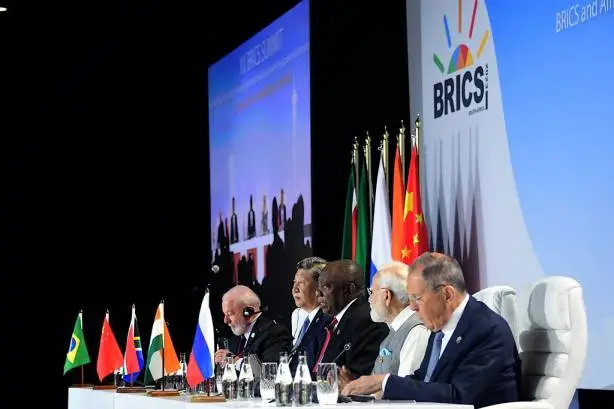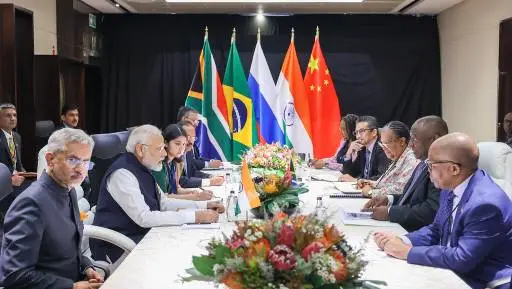What is BRICS?
BRICS Summit 2023 ( Brazil, Russia, India, China, and South Africa (together referred to as “BRICS”) form the grouping of the world’s largest developing economies. The term “BRIC” was first used to designate Brazil, Russia, India, and China by British economist Jim O’Neill in 2001.
The BRIC nations officially banded together when their foreign ministers met for the first time in 2006. After inviting South Africa to join in December 2010, the organization became known as BRICS.
BRICS Summit 2023 Theme:
As the Chair of BRICS Summit 2023, South Africa focused on the theme as-
“BRICS and Africa: Partnership for Mutually Accelerated Growth, Sustainable Development, and Inclusive Multilateralism”
South Africa’s five 2023 priorities revolve around this central theme: fostering a partnership towards an equitable and just transition, including mitigating the risks associated with climate change; transforming education and skills development for the future; capitalizing on opportunities presented by the African Continental Free Trade Area; supporting post-disaster socioeconomic recovery and the realization of the 2030 Agenda for Sustainable Development; and bolstering multilateralism, including through the promotion of the United Nations’ Sustainable Development Goals.

Expansion of the BRICS to BRICS+:
For the fifteenth time, the leaders of state or government from Brazil, Russia, India, China, and South Africa met at the BRICS summit in 2023 to discuss international relations.
Cyril Ramaphosa, president of South Africa, sent invitations to the heads of state of 67 nations. There has been considerable interest from other nations in joining the BRICS bloc.
South African President Cyril Ramaphosa said during the conference that Argentina, Egypt, Ethiopia, Iran, Saudi Arabia, and the United Arab Emirates had been asked to join the group. The date of January 1, 2024, marks the beginning of full membership.
How would the BRICS+ be beneficial or not for the New Joiners?
This volatile area is both aware of and drawn into the massive geopolitical re-ordering that is taking place, as seen by the fact that four of the six nations selected to join the BRICS grouping are located in the Middle East.
Egypt, Iran, Saudi Arabia, and the United Arab Emirates all differ greatly in terms of size, power, stability, and potential. Despite their size and historical significance, the former two are struggling at home and will look to the other BRICS nations for support.

The latter two are forceful and powerful geo-economic powers who want to change the global order and hope to be part of non-Western trade.
Additionally, Each is a result, not surprisingly, in part, of escalating tensions with the United States. Iran, which has been isolated globally for decades, may show that it is no longer reliant on Western powers’ approval of its global integration.
However, the United States has had close ties with Egypt, Saudi Arabia, and the United Arab Emirates for many years.
Their paths have diverged due to unfulfilled hopes, different perspectives on the area, and a general unwillingness to take sides in the struggle between China and the United States for fear of angering Russia.
But rather than trying to cut ties with the Western countries that are crucial to their security and economy, they are adopting a policy of multi-alignment. Moreover, BRICS won’t be able to solve the issues with fundamental security and economic stability.
These Middle Eastern countries will join the BRICS with heated rivalries and lofty ambitions, but they are unlikely to risk alienating Russia, China, or India. In the next few years, Statecraft is guaranteed to be intricate and uncomfortable.





